The Beginner’s Guide: Xavier Dolan, Director
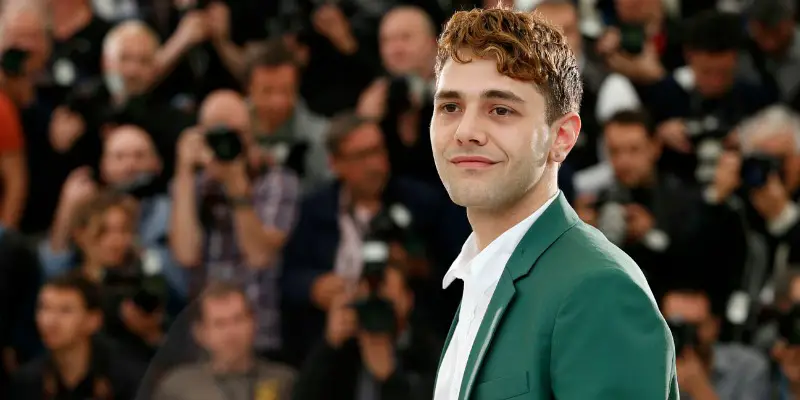
Alex is a film addict, TV aficionado, and book lover.…
If you don’t keep up, the filmography of Québécois director Xavier Dolan could expand into an intimidating mass. He released five films between 2009 and 2014 and already has two more in the pipeline, additionally serving as writer, editor, actor, and costume designer for several of the projects.
That output, along with other extraneous facts, like his young age, has drawn headlines that sadly take attention away from what is an expressive filmography. Dolan plays with everything in a filmmaker’s toolkit, be it sound, color, aspect ratio, or narrative framing, to heighten the emotions in his stories. While this can be used to reductively lump his films together, a closer look reveals that he’s used these flourishes in service of comedy and drama, to enhance thrills, and to explore the many facets of untenable love.
I Killed My Mother
A striking title for a striking debut, Dolan’s semi-autobiographical take on his teenage relationship with his mother displays many of the director’s greatest strengths, if in a raw, unrefined form. Dolan plays the young man, Hubert, opposite frequent collaborators Anne Dorval and Suzanne Clément. Mother and son care for each other but have grown apart. They clash constantly, often spurred on by Hubert’s unbending nature. He hasn’t developed the tack to sit in a room with someone he dislikes, and the fact that he is simultaneous repulsed by and in love with his mother confuses him to the point of overwhelming frustration.
The characters in this film feature a trait that would recur throughout many of Dolan’s pieces: verbosity. These characters do not tolerate the world without providing their input, often loudly. However, their shrillness is a measured expression. These are often people struggling to connect, and their constant interjects reveal the insecurities that are driving them. In I Killed My Mother, Hubert rages against an evolving relationship. In later films, characters will snap at the pressures grinding them from outside and in.
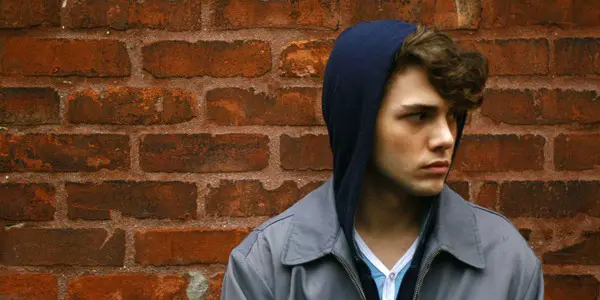
These moments would be out of place in smaller films, but Dolan doesn’t make small films. They have emotional scopes that few movies reach for, even when they tread over familiar territory. I Killed My Mother would be a standard teen angst movie if it weren’t so deeply felt, taking chances with extreme framing, musical interludes, and black-and-white commentary from Hubert to bring the competing emotions to the forefront.
All this being said, I Killed My Mother is still Dolan’s first film, and it’s got an uneven structure to show for it. Dolan never went to film school, but he did enter the business very young as a child actor. His earnings from that career partially funded this film, and while it may not have been the traditional starting point for arthouse grandeur, that’s where Dolan took it.
Heartbeats
Trading in high drama for arch winks, Heartbeats is a knowingly slight story about two friends falling for the same man. This situation is, of course, deadly serious for the embattled duo, and Dolan captures their pining efforts with all the gusto the characters bring to it. Several sequences are in slow motion and accompanied by Dalida’s Bang Bang, while the object of their affection is given poetic side imagery that makes the term Adonis jump immediately to mind.
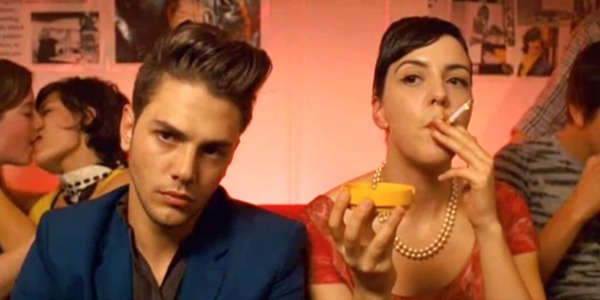
It’s all ludicrously big, and therein lies the joke. The audience knows how ridiculous the pair is being, and the more Dolan shows us the extent of their faulty love, the funnier it is. In a way, the film almost plays as a humorous take on Roland Barthes’ four sufferings of a jealous man (who is excluded, aggressive, crazy, and common), the last of which makes for a killer ending.
Heartbeats was born from the desire by Dolan and his co-stars and friends Monia Chokri and Niels Schneider to work together, a love triangle being an easy outline for a trio. Perhaps this is why the story is a bit slight, but it still shows Dolan successfully channeling his lush tendencies for a good laugh.
Laurence Anyways
Laurence Anyways sees Dolan return to drama with a nearly three-hour saga of lovers confronting who they really are. It’s as grand in scope emotionally as it is narratively, tracking the ups and downs of a relationship for ten years while overcoming a potentially marginalizing premise.
The titular Laurence (Melvil Poupaud) announces her impending transition from male to female early on, eliciting a less-than-picturesque response from girlfriend Fred (an excellent Clément). Fred quickly comes around, however, and the couple’s relationship becomes strained more by outside influences than their own personal bond.
While the gender transition is a flashy subject, Dolan takes the film far beyond an exploration of a marginalized community. He does capture Laurence’s struggles, particularly in shots that show her walking dead center of the frame and receiving a variety of pointed looks, but the film is as much about Fred as it is Laurence. She has her own needs in life, and whether their paths are moving together or separate is the crux of the film’s drama.
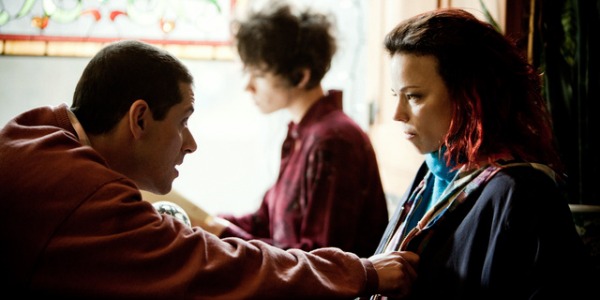
This double perspective allows Dolan to capture the relationship from both sides, exploring how these things can fail without fault. Pay attention to when Dolan breaks out the flourishes here. The big ones appear in moments that indicate what Fred and Laurence thrive on or are defeated by in life. It’s hard, when you understand a character’s base needs like that, to judge them too harshly.
There are smaller flourishes throughout the film, but they fade into the story a bit more seamlessly than in Dolan’s previous films. They exist to drive the story rather than hammer it home, providing an even support for a film that takes you into the vast nuances of a long-term relationship.
Tom at the Farm
A purposeful step away from his previous films, Tom at the Farm sees Dolan take on a psychological thriller and all the conventions that come with it. In the film, a young man travels to the country to attend his boyfriend’s funeral only to find a tangle of lies and barely contained frustrations that threaten to ensnare him.
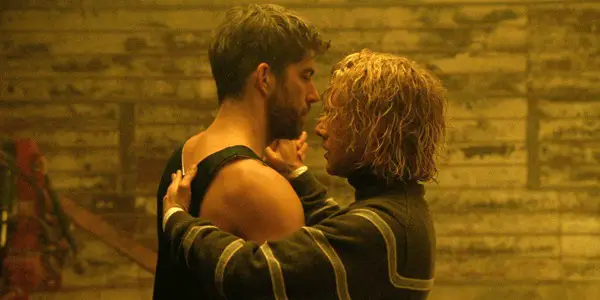
Dolan again stars in the film, growing out a stringy mess of bleached hair designed to fade into the cornfields that suddenly surround him. Yes, his visual eye is still as strong as ever, but the techniques he employs service a tight, tense thriller. In one of his more effective and subtle moves the frame slowly squeezes around the action, a noose as unnerving as the violence going down onscreen.
That violence simmers and bursts throughout the film, and it’s there that Dolan channels his heightened sensibilities. Thrillers are all about teasing the threat, holding on a sense of unease that’s often more satisfying than the eventual payoff. Dolan manages the hold well, relying on tried-and-true genre elements like a nervy score to keep the threats looming over a cast of ambiguous characters.
The presence of something like Tom at the Farm in Dolan’s filmography is crucial, as its goals are so precisely defined and executed that it serves as proof positive that Dolan’s stylistic choices are just that: choices. When needed, he does have the control to reign things in. He just chooses not to.
Mommy
Mommy is a return to familiar territory for Dolan, with a story populated by complex mother-and-son relationships, emotional outbursts, and swells of music. However, this is far from a rehash of what you see in I Killed My Mother (although it does bring back Dorval and Clément). No, Mommy is far more about the vacillating nature of life, careening as we do between periods of optimism and the blows that take us down.
The film begins with Dorval’s Die taking custody of her volatile son, who proves too much for her to take care of alone. Neighbor Kyla (Clément) is recruited to help, and the trio form a lovingly troubled group clinging to the unexpected hope they bring each other.
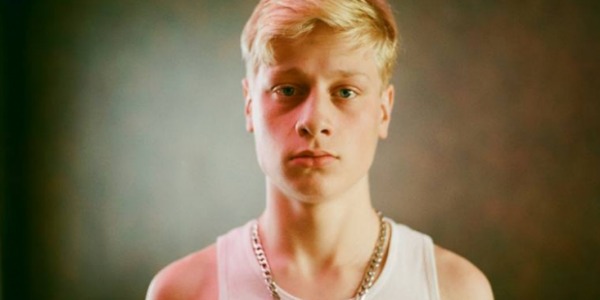
The film drew much attention for its 1:1 aspect ratio, a perfect square that keeps the characters as the narrow focus of the movie’s frame. Without anything else to look at, the audience considers them rather intensely, and their warts and charms sink in deep. This attachment is precisely what makes the film work, as the strength of your connection to them directly correlates to your emotional response when they are joyous or in pain.
The film skirts with melodrama, but Dolan again uses his flourishes precisely, turning the story into something at once intimate and large. You get rattled by these characters, presented as they are with that aspect ratio and some well-chosen music. There are moments when the ratio changes, the world expands, and a crushing amount of emotion falls on the audience. These are carefully constructed sequences, but it’s not important that you notice the technical prowess. The point is for you to feel it, and feel it you do.
Upcoming Work
With the success of his previous films, Dolan is joining the growing number of Québécois directors helming high profile international projects. His sixth film, the family drama It’s Only the End of the World, stars top-tier French actors like Marion Cotillard, Vincent Cassel, Gaspard Ulliel, and Léa Seydoux. It will compete for the Palme d’Or at the 2016 Cannes Film Festival, marking Dolan’s fifth time at the festival and the second time competing for the top prize. Previously, Mommy shared the Jury Prize with Jean-Luc Godard’s Goodbye to Language and his other films won an assortment of smaller awards.
Casting for his English-language directing debut, The Death and Life of John F. Donovan, has drawn an impressive ensemble including Jessica Chastain, Kit Harington, Susan Sarandon, and Nicholas Hoult. It will follow an actor reflecting on a pen-pal relationship with a past idol after the correspondence is exposed to the public.
If his previous work is any indication, these films should be expressive examples of character-based filmmaking. Where he goes after them is anyone’s guess.
What do you think of Xavier Dolan’s work? Does a certain aspect jump out at you as particularly noteworthy?
Does content like this matter to you?
Become a Member and support film journalism. Unlock access to all of Film Inquiry`s great articles. Join a community of like-minded readers who are passionate about cinema - get access to our private members Network, give back to independent filmmakers, and more.
Alex is a film addict, TV aficionado, and book lover. He's perfecting his cat dad energy.













